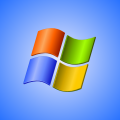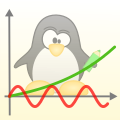Yocto-Visualization V2 for macOS
![]() As Yocto-Visualization is now available on Linux, we thought that we should make an effort for users fighting to maintain a Mac OS X macOS ecosystem. And thanks to the good work made by Mono's developers, it's now possible!
As Yocto-Visualization is now available on Linux, we thought that we should make an effort for users fighting to maintain a Mac OS X macOS ecosystem. And thanks to the good work made by Mono's developers, it's now possible!
| No comment yet | Read more... |
Yocto-Visualization and Windows XP
 As some of you have already noticed it, version 2 of our Yocto-Visualization application doesn't run under Windows XP. Actually, it uses the .NET 4.5 framework which you can't install on Windows XP. This week, we show you how to work around this issue.
As some of you have already noticed it, version 2 of our Yocto-Visualization application doesn't run under Windows XP. Actually, it uses the .NET 4.5 framework which you can't install on Windows XP. This week, we show you how to work around this issue.
| No comment yet | Read more... |
Using Yocto-Visualization with a YoctoHub-GSM
![]() Yocto-Visualization enables you to very easily visualize data from Yoctopuce sensors, whether they are connected by USB or through a network hub, with the exception of the YoctoHub-GSM. Indeed, the GSM SIM cards available to ordinary people do not have a public IP address and are behind a NAT filter, which prevents the Yocto-Visualization to connect itself directly on it. However, there is a way to work around this issue.
Yocto-Visualization enables you to very easily visualize data from Yoctopuce sensors, whether they are connected by USB or through a network hub, with the exception of the YoctoHub-GSM. Indeed, the GSM SIM cards available to ordinary people do not have a public IP address and are behind a NAT filter, which prevents the Yocto-Visualization to connect itself directly on it. However, there is a way to work around this issue.
| No comment yet | Read more... |
Level monitoring and leak detection
![]() On these hot Summer days, we propose to discuss today two classical topics of remote monitoring: monitoring the level of a tank and detecting water leaks (or other liquid leaks). For these two applications, we are going to show you how you can interface existing sensors with Yoctopuce modules.
On these hot Summer days, we propose to discuss today two classical topics of remote monitoring: monitoring the level of a tank and detecting water leaks (or other liquid leaks). For these two applications, we are going to show you how you can interface existing sensors with Yoctopuce modules.
| No comment yet | Read more... |
Yocto-Visualization V2 on Linux
 Stripping the Yocto-Visualization V2 application of all third party libraries has an interesting side effect: one may try to compile it with Mono and make it run on operating systems other than Windows. So we tried to make a Linux version... and it works!
Stripping the Yocto-Visualization V2 application of all third party libraries has an interesting side effect: one may try to compile it with Mono and make it run on operating systems other than Windows. So we tried to make a Linux version... and it works!
| No comment yet | Read more... |


